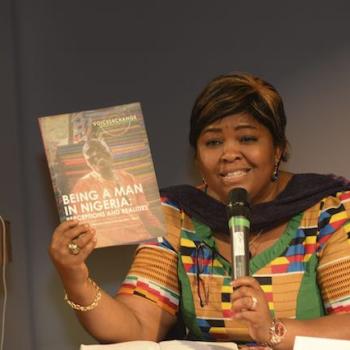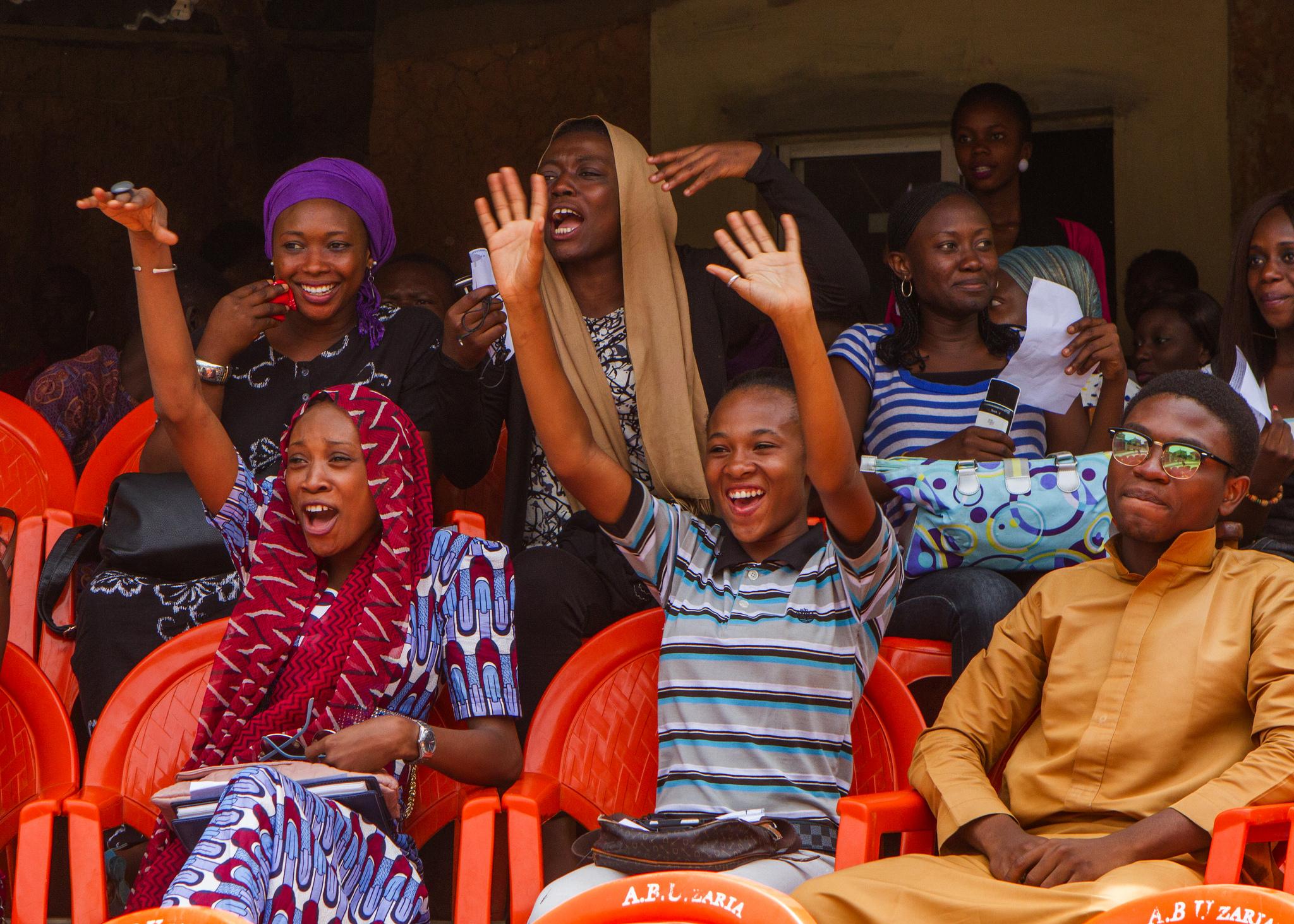
Ask young people to describe themselves and the chances are you’ll get very different answers to the ones provided by anyone older. So why do we think we know what young people need and how can we be sure we’re designing the right programmes to help them? How can we move away from young peoples’ empowerment initiatives that seem like rescue missions towards creating opportunities that explore and maximise their potential?
These are just some of the questions we’ve been asking at Voices for Change (V4C), a DFID-funded programme that seeks to create the enabling environment of empowerment for adolescent girls and young women age 16-25 years old in Nigeria. While we don’t claim to have all the answers, V4C has drawn the following insights and lessons from our engagement with young people and is feeding them back into our work as we progress.
Young people’s narratives about themselves are key to effective programming
We cannot underestimate the importance of constantly listening to young people, so that we understand and value how they define and premium themselves. If we are to get young people on board we must understand what makes them tick and carve and package our messaging around that.

We need to be audience-led
At V4C, this has meant developing and marketing ‘Purple’ – a popular culture lifestyle brand involving an innovative mix of virtual and physical spaces such as our online lifestyle magazine ‘I am Purple’, the radio drama Purple Tinz, school and college-run training on gender and celebrity endorsements. A key factor for the success of Purple is the active contributions of the young people themselves. For example, they co-create the site content, help to develop and review our training manuals and act as ‘Ambassadors’ – sharing the Purple message with friends and family.
Empowering young women and girls requires understanding the issues from a range of perspectives
Findings from our ongoing research have revealed how the notion of masculinity and femininity drives negative stereotypes and inequality between boys, girls, men and women and from generation to generation. While V4C is a programme aimed at creating an enabling environment for young women, it is essential we work with young men, not as a tokenistic effort, but with equal thrust. We need men to be part of the driving force for change as much as women.
Changing structural inequality requires an innovative approach
We believe if we can influence individuals and their community to drop negative social norms and embrace and promote positive norms, changes will be facilitated and sustained. This ‘social norms’ approach, combined with individual behaviour change approaches to provide impetus to wider change, is proving to be successful as we are seeing greater number of young and old people rejecting old norms and adopting positive new ones. Working with these individuals and groups from various sectors and connecting their voices is helping to galvanise actions for gender equality and equity across the locations where we work.
An evidence-based approach involving young people is critical to the success of V4C
We have made a huge investment in generating and promoting research findings which can be fed back into the programme design and shared with others implementing similar initiatives. Hand and hand with this is the consultative approach we have adopted in generating the themes, rollout of the research, reviews and dissemination with young people themselves.
Pathway to the future
As we begin to plan our next phase of work, we ask for practitioners and policy makers to address stereotypes and negative social norms around masculinity and femininity and create stronger partnerships through better connections between local, national and international voices and actions. We call for a global monitoring mechanism to measure what countries are doing to support their young people and to provide greater accountability. Finally, we call for the participation of young people as a de facto component of all future youth programme design – not just a tick box.
For programmes to truly empower our young people, the gap between how they see themselves and how we define them must be closed. We must put away the negative lenses we often hold up to view the world and see through their own eyes, the life they want for themselves. Young people remain great resources for moving the gender agenda forward globally, all we need do is to treat them as the formidable partners that they are.
Patience Ekeoba is the Research and Evidence Lead for the Voices for Change Programme, Nigeria

Ask young people to describe themselves and the chances are you’ll get very different answers to the ones provided by anyone older. So why do we think we know what young people need and how can we be sure we’re designing the right programmes to help them? How can we move away from young peoples’ empowerment initiatives that seem like rescue missions towards creating opportunities that explore and maximise their potential?
These are just some of the questions we’ve been asking at Voices for Change (V4C), a DFID-funded programme that seeks to create the enabling environment of empowerment for adolescent girls and young women age 16-25 years old in Nigeria. While we don’t claim to have all the answers, V4C has drawn the following insights and lessons from our engagement with young people and is feeding them back into our work as we progress.
Young people’s narratives about themselves are key to effective programming
We cannot underestimate the importance of constantly listening to young people, so that we understand and value how they define and premium themselves. If we are to get young people on board we must understand what makes them tick and carve and package our messaging around that.

We need to be audience-led
At V4C, this has meant developing and marketing ‘Purple’ – a popular culture lifestyle brand involving an innovative mix of virtual and physical spaces such as our online lifestyle magazine ‘I am Purple’, the radio drama Purple Tinz, school and college-run training on gender and celebrity endorsements. A key factor for the success of Purple is the active contributions of the young people themselves. For example, they co-create the site content, help to develop and review our training manuals and act as ‘Ambassadors’ – sharing the Purple message with friends and family.
Empowering young women and girls requires understanding the issues from a range of perspectives
Findings from our ongoing research have revealed how the notion of masculinity and femininity drives negative stereotypes and inequality between boys, girls, men and women and from generation to generation. While V4C is a programme aimed at creating an enabling environment for young women, it is essential we work with young men, not as a tokenistic effort, but with equal thrust. We need men to be part of the driving force for change as much as women.
Changing structural inequality requires an innovative approach
We believe if we can influence individuals and their community to drop negative social norms and embrace and promote positive norms, changes will be facilitated and sustained. This ‘social norms’ approach, combined with individual behaviour change approaches to provide impetus to wider change, is proving to be successful as we are seeing greater number of young and old people rejecting old norms and adopting positive new ones. Working with these individuals and groups from various sectors and connecting their voices is helping to galvanise actions for gender equality and equity across the locations where we work.
An evidence-based approach involving young people is critical to the success of V4C
We have made a huge investment in generating and promoting research findings which can be fed back into the programme design and shared with others implementing similar initiatives. Hand and hand with this is the consultative approach we have adopted in generating the themes, rollout of the research, reviews and dissemination with young people themselves.
Pathway to the future
As we begin to plan our next phase of work, we ask for practitioners and policy makers to address stereotypes and negative social norms around masculinity and femininity and create stronger partnerships through better connections between local, national and international voices and actions. We call for a global monitoring mechanism to measure what countries are doing to support their young people and to provide greater accountability. Finally, we call for the participation of young people as a de facto component of all future youth programme design – not just a tick box.
For programmes to truly empower our young people, the gap between how they see themselves and how we define them must be closed. We must put away the negative lenses we often hold up to view the world and see through their own eyes, the life they want for themselves. Young people remain great resources for moving the gender agenda forward globally, all we need do is to treat them as the formidable partners that they are.
Patience Ekeoba is the Research and Evidence Lead for the Voices for Change Programme, Nigeria

